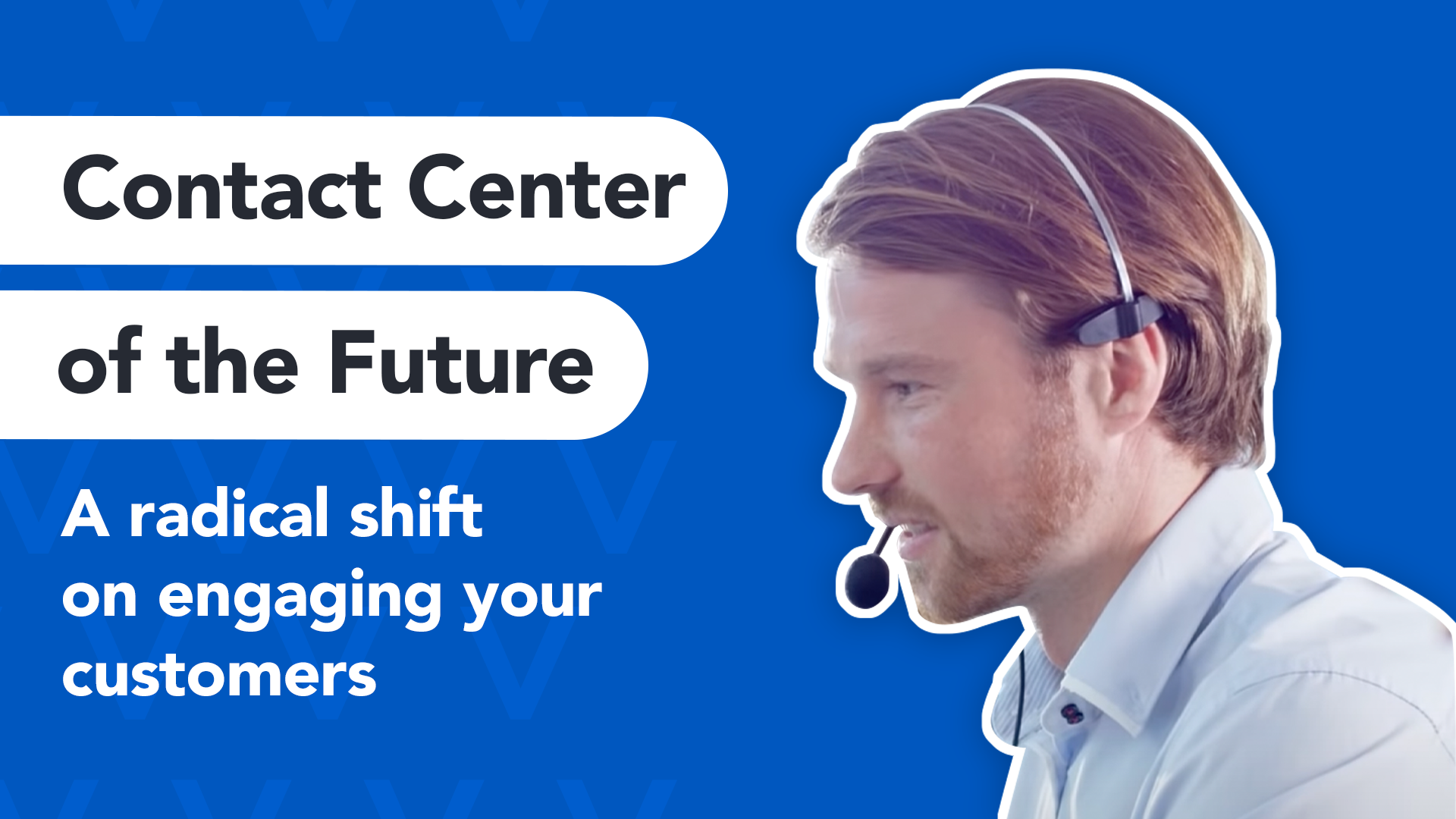Omnichannel Contact Center: A Guide from Verint


The fundamental nature of how organizations deliver customer experiences (CX) has undergone a tectonic shift in the past few years, placing increasing pressure on operational processes. One of the biggest challenges CX leaders are facing is difficulty providing a consistent experience for customers across a wider variety of digital engagement channels.
While a customer might initially reach out via your website or speak to a call center agent, they may subsequently jump to a different channel. Perhaps they’ll message you on social media—or maybe they’ll test out your live chat tool.
If it feels like you have a lot of metaphorical CX plates spinning and need to streamline your service offering, you’re in the right place. With the right omnichannel contact center software, you can unify your digital engagement channels and provide a consistent and seamless experience for customers, and your agents.
What Is an Omnichannel Contact Center?
An omnichannel approach to the contact center enables organizations to seamlessly manage customer interactions across a variety of channels, typically via cloud-based solutions.
Consumers want to connect with businesses via many different channels, such as:
In fact, they often switch between these channels too. That’s where an omnichannel approach to the contact center comes in. Using a solution such as Verint Channel Automation, you can connect customer engagements across channels, so your contact center representatives can easily pull up a complete history of a customer’s interactions.
Multichannel vs omnichannel contact center solutions
People often mix up omnichannel and multichannel contact center solutions because they share similarities. After all, a multiple channel approach also enables your customers to interact with your brand via several methods.
However, there is a key difference you should be aware of. With an omnichannel contact center, all available channels are connected, creating a smoother journey for customers who switch between phone, web and other support channels.
Meanwhile, with a multichannel contact center, these channels aren’t synced. While your customers can still access all channels, they won’t have a seamless experience if they switch between them. In other words, if they make an inquiry on social media, they’ll need to start from scratch if they switch to another channel.
Call center vs omnichannel contact center solutions
Another common cause of confusion is the similar sounding call center software.
Call center applications are a telephone-specific approach to communication. On the other hand, omnichannel contact center solutions focus on all the different avenues customers use to interact with your organization.
Many organizations that have historically prioritized call centers have evolved to enable agents to also deliver customer service via digital engagement channels.
What are the most important omnichannel contact center features?
Now that we’ve established what omnichannel contact center solutions are, let’s explore the main capabilities and features you should look out for when you’re picking a software application.
Any omnichannel contact center software worth its salt should have:
- Omnichannel routing: With omnichannel routing, system admins can assign which customer inquiry types particular agents deal with, regardless of which channel they come through. Alternatively, intelligent solutions can automatically assign inquiries based on context, channel or customer history.
- Customer sentiment analysis: Put simply, customer sentiment analysis is an AI-powered feature that analyzes customer messages and calculates their emotion during service. You can use this information to find pain points in the customer journey and improve employee training. Customer sentiment analysis also enables you to analyze phone calls for particular keywords such as “refund” or “missing item”. Using these speech analytics insights, you can discover what the top reasons are that clients reach out to your contact centers.
- Ecosystem integration: To create a smoother transition for employees who are navigating multiple applications, your omnichannel contact center solution needs to support software integrations. Generally, you should look out for integrations with your CRM, knowledge management, and any other key tools.
- Workforce management: Integrate your workforce management (WFM) and contact center software to get the best out of your team. WFM tools generally help you to give agents the flexibility to choose their own shifts—and gain greater insights into employee efficiency.
- Reporting and analytics: Monitor contact center KPIs to gain insight into things such as which channels of communication generate the most engagement. Key analytics include average phone call duration, first contact resolution, and contact abandonment rates.
Benefits of Omnichannel Contact Center Software
There are many benefits to using cloud-based omnichannel solutions, including:
- Higher customer retention
- Shorter resolution times
- Increased personalization
- Reaching a wider audience
Higher customer retention
As we revealed in The 2022 State of Digital Customer Experience report, 48% of customers prefer to use digital channels to engage with brands. With so many customers using digital channels to reach you, it’s crucial to perfect your online offering.
When you’re not using an omnichannel contact center, paint points such as customers having to repeat information can quickly creep in and damage your customer relationships, dropping your customer retention rate.
Fortunately, cloud-based contact center solutions eliminate such points of friction. In fact, they typically lead to higher customer retention rates.
Using sophisticated conversational AI technology, Verint Channel Automation enables agents to work seamlessly across channels to deliver exceptional customer experiences. It also includes intelligent virtual assistants that can effortlessly handle routine customer inquiries, helping to dramatically reduce support costs.
Shorter resolution times
Another key benefit of using an omnichannel contact center approach is that customers enjoy shorter wait times to receive support.
With top-quality self-service IVR functionalities, you can dramatically reduce the strain on call center agents by helping more customers to find the answers they need independently. In turn, this drives employee retention and frees up agents to focus on high priority tasks.
The customer will see an even faster resolution if they do need to be put through to a live agent. The agent can easily pull up the customer’s entire conversation history to save time and resolve the issue much quicker than usual.
Increased personalization
Today, personalized experiences are the bread and butter of any worthwhile service offering. The more you tailor your services to each customer, the longer you’ll likely retain clients for.
Omnichannel contact center solutions can help you to personalize all customer interactions using automated and customized SMS, email and social media messages.
Likewise, by giving agents access to the customer interaction histories, you can better prepare them for calls and ensure service is that little bit more personalized.
There’s also the added personalization benefit for your marketing communications. Using customer history data, you can better segment clients into different audiences and create tailored campaigns.
Reach a wider audience
Different generations use different channels to get in touch with organizations.
Baby boomers tend to prefer to call your customer service agents. Millennial and Gen Z consumers, on the other hand, are more likely to engage with your organization via digital channels. Gen X find themselves split between both camps.
It may come as no surprise to learn that 56% of under 45s prefer to ask a product or service-related question via digital channels, such as private messaging, live chat, social media, or on a brand community, instead of over the phone.
By connecting multiple channels, you can make your organization more appealing to a wider range of people. As a result, you’ll likely see a significant ROI.
How to Implement an Omnichannel Contact Center
If you’re ready to use an omnichannel cloud contact center solution, you’ll want to follow the best practice tips below to make sure you’re implementing the right structure.
- Choose which channels to use: It’s true that you can reach a wider audience by utilizing multiple support channels. However, what’s really important is that you perfect the customer experience for each and every channel you deploy.
- Map the buyer journey: To help prepare for implementation, make sure you understand the buyer journey like the back of your hand. This way, you’ll know what support to give customers to encourage them to convert at key moments in their omnichannel service journey.
- Track performance: If you’re monitoring your KPIs closely, you likely can’t go wrong. You’ll spot any issues as soon as they occur and be able to figure out what improvements need to be put in place to resolve them.
For organizations using a CCaaS (Contact Center as a Service) solution, it’s important to find out if your current system has omnichannel capabilities.
FAQs
What is omnichannel in simple terms?
Omnichannel–sometimes spelled omni-channel—is a word organizations use to talk about unifying the customer experience across online channels (like their website and social media accounts) and offline channels (like the in-store experience).
Why is omnichannel important in contact centers?
Using an omnichannel approach is important in contact and call centers if you want to drive customer retention, increase visibility over customer interactions and reduce the strain on your support agents. Ultimately, by using an omnichannel cloud contact center solution, you’ll create a more seamless experience for customers who switch between live chat, phone, in-store and other channels before they make a purchase.
What is a successful omnichannel strategy?
A successful omnichannel strategy connects your sales, marketing and customer support services with the goal of providing customers with a seamless experience across channels.
Who should use omnichannel contact centers?
Companies that use more than one channel to interact with customers should consider using omnichannel contact centers. In particular, retailers, call centers, banks and healthcare organizations often see the greatest improvements.
Learn more
Is your business reaching a breaking point because your call center agents are under increasing pressure? Verint can help.
Designed to help you deliver a superior customer experience, Verint’s leading CCaaS solutions enable agents to deliver seamless CX across channels while automating repetitive tasks to reduce average handle time and improve customer satisfaction.
To learn more about evolving your omnichannel contact center offering with Verint, watch the video below.
